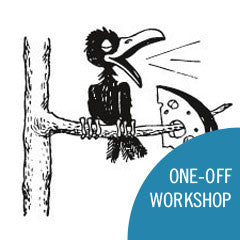
Without words
£14.95
The transition from primary to secondary school is a daunting one. Not only are pupils faced with a new set of rules and structures, but the drama lesson suddenly features on their timetable as a discrete subject. Added to this, their experience of drama at primary level will be varied and in some cases limited. Drama as a subject may be laced with all sorts of misconceptions for many of our new students. For some, ‘drama’ is performing in front of a large audience and this can heighten their worries about what they will be expected to do in lessons.
This module, 'Without Words' was devised to try to address these issues, to eradicate initial apprehensions about drama, increase personal confidence and give students the opportunity to begin to develop their skills in a supportive and enjoyable way. The title of the module has a double meaning. Not only does it aim to develop students’ non-verbal skills, but it is also intended to help those students who are under-confident and are initially themselves ‘Without Words’ to express their thoughts and feelings openly to others. It contains the first set of Year 7 drama lessons that our students undertake when they join the college.
The first lesson in the sequence focuses on the idea of communication. Students are taken through an introductory skills lesson in preparation for work to follow. This starter lesson is designed to stimulate students into thinking about the skills needed for non-verbal communication – for example, using their imagination and cooperating with others.
As lessons progress, students move from individual to pair work, and then from pair work to group, so that they can build up their confidence working with other new students. Techniques are introduced at each stage (still image, thought-tracking and so on) so that students can begin to see how the application of these can improve their drama work. The final piece involves a group presentation to their class audience, utilising the skills learnt in the sessions.
The lessons are devised for one-hour slots. The timings are approximate and some tasks may take longer than others on occasions. Be prepared to be flexible.
Learning objectives:
- To increase confidence in dramatic ability
- To develop awareness of the basic skills required for each lesson
- To understand the importance of using communication skills
- To explore the phrase non-verbal communication
- To explore the dramatic technique of still image
- To begin to develop awareness of the importance of face, body and space in communicating ‘without words’
- To work collaboratively and creatively with others in making more detailed still images
- To learn about the dramatic technique of thought-in-the-head
- To apply this technique to drama work
- To engage in positive discussion of work created
- To participate in pair work
- To consider the use of still image as a starting point for movement work
- To introduce the term sequence and its use in drama
- To co-operate with and utilise the ideas of others in the development of more complex still images
- To participate in a group piece.
- To gain a basic understanding of the technique of mime
- To use mime as a tool for communicating thoughts and feelings without words
- To utilise skills developed so far in the devising of mime sequences
- To further develop group work
- To develop more detailed use of FBS in mime work
- To use movement to convey a simple character
- To plan and devise a basic story using character types
- To improve the approach to movement tasks by building on previous experience
- To present and evaluate a short piece of drama
- To evaluate individual and group success
- To reflect on learning
Number of Lessons: 7




